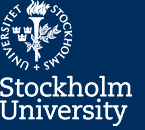Measurement and control with LabVIEW
General course information
Credits: 4.5 hpKursbeskrivning (in Swedish): LabVIEW_Kursbeskrivning_v2.doc
Course start: Depending on demand. The course starts with self-studies.
Registration
Registration to the course is mandatory. Please send an email with your name, department, and, when applicable, a suggestion of measurement system to work on to andreas.rydh@fysik.su.se. Since the course contains major elements of personal discussions with supervisor, the number of participants is limited to 12.
The information below corresponds to the Swedish course description above.
Overview
This course covers construction of measurement- and control systems for experimental research or industrial processes with LabVIEW. LabVIEW has become a fast and complete programming language during the recent years and has powerful libraries for calculations and handling of instrumental communication.
Good tools and methods are needed to manage the increassed speed and complexity of the computer-networked systems of today. The course is aimed to give the participant an insight into how LabVIEW can be used for effective communication with measurement equipment of different kind. Practical programming tasks will be tied to existing, scientific equipment. Participants with their own equipment will be given the possibility to develop their own program library for communication with and control of it.
Expected results
After completing the course, the participant should be able to
- Develop their own routines for communication by using existing libraries
- Investigate the functionality of existing routines for instrumentation communication
- Debug communication routines by tracking and bugging
- Improve communication routines towards increased stability, speed, and compatibility
- Program by means of objects, events, state machines, and threads
- Use the LabVIEW help system to access documentation and examples
- Use LabVIEW for generic programming
Teaching structure
The course is given as an about two weeks long intensive course. Before the first meeting, the participant should acquire basic knowledge of LabVIEW by installing LabVIEW 8.0 or later and go through a selection of the common, accopanying examples (see this page). The teaching consists of
- Four teacher-led seminars, each about 3 hours long, where advantanges and disadvantages with different programming techniqes and communication libraries are discussed in small groups.
- Individual work with development of individual communication routines on location in the laboratory or similar
- Three scheduled, individual discussions (about 2 hours each) with the course supervisor, where the individual project is described, bug-tested and demonstrated, problem with possible solutions are discussed, and goals for the project are set
- Discussions with other course participants (in groups of maximum 3), where the individual projects are described, tested, and possible changed/improvements for increased stability, speed, and compatibility are suggested. At least three meetings should be centered around the participants own project and three around other projects.
- A concluding, participant-led symposium where the individual projects are summarized in short presentations (10 minutes per project, including questions)
Examination
The course is graded with only pass/fail. For passing the course, the following is required:
- Completed project and presentation thereof. The project should demonstrate working, two-direccted communication with at least one measurement/control instrument and good programming techniques by using objects, events, a state machine, and threads. The project should also follow the guidelines for generic programming design that makes it easier for the final user.
- Presence at the sceduled discussions with supervisor and other participants
- Handed in short summaries of discussions with supervisor and other participants, concerning their projects and descriptions of the improvements that were suggested
Other relevant information
Stockholm university (and KTH) has a site-licence from National Instruments for the use of LabVIEW in research and education. Every participant is expected to have access to a dedicated computer with LabVIEW 8.0 or later installed before the first physical meeting. Please contact the course responsible or the computer support at your education or department for help with installation.
Examiner and course responsible
Andreas Rydh
Experimental Condensed Matter Physics
Department of Physics, Stockholm University
Phone: 08-5537 8692 (office), 08-5537 8691 (lab)
Email: andreas.rydh@fysik.su.se
